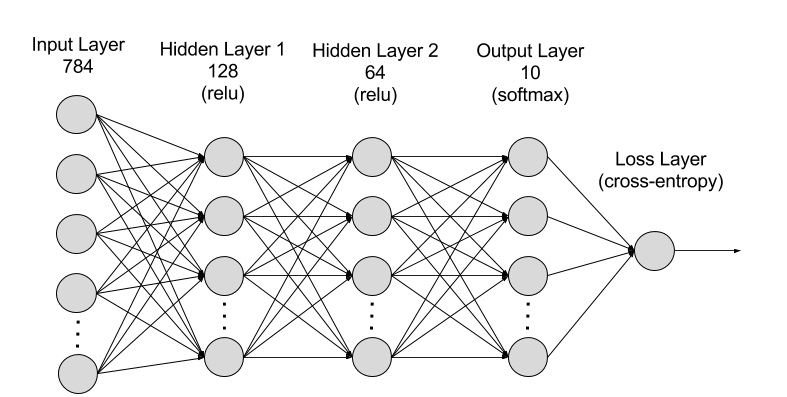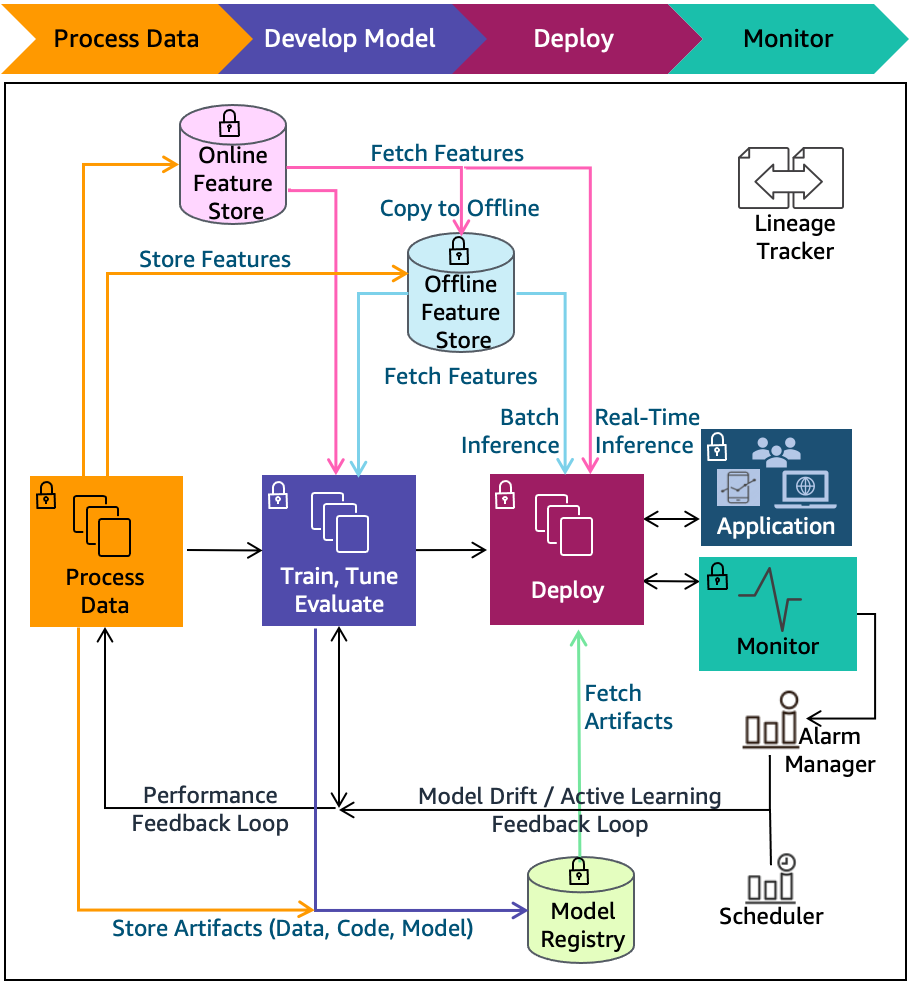What’s the Difference Between Machine Learning and Deep Learning?
Machine learning (ML) is the science of training a computer program or system to perform tasks without explicit instructions. Computer systems use ML algorithms to process large quantities of data, identify data patterns, and predict accurate outcomes for unknown or new scenarios. Deep learning is a subset of ML that uses specific algorithmic structures called neural networks, modeled after the human brain. Deep learning methods attempt to automate more complex tasks that typically require human intelligence. For example, you can use deep learning to describe images, translate documents, or transcribe a sound file into text.
What are the similarities between machine learning and deep learning?
You can use both machine learning (ML) and deep learning to identify patterns in data. They both rely on datasets to train algorithms that are based on complex mathematical models. During training, the algorithms find correlations between known outputs and inputs. The models can then automatically generate or predict outputs based on unknown inputs. Unlike traditional programming, the learning process is also automatic with minimal human intervention.
Here are other similarities between ML and deep learning.
Artificial intelligence techniques
Both ML and deep learning are subsets of data science and artificial intelligence (AI). They can both complete complex computational tasks that would otherwise require extensive time and resources to achieve through traditional programming techniques.
Statistical basis
Deep learning and ML both use statistical methods to train their algorithms with datasets. These techniques involve regression analysis, decision trees, linear algebra, and calculus. ML experts and deep learning experts both understand statistics well.
Large datasets
Both ML and deep learning require large sets of quality training data to make more accurate predictions. For instance, an ML model requires about 50–100 data points per feature, while a deep learning model starts at thousands of data points per feature.
Wide-ranging and various applications
Deep learning and ML solutions solve complex problems across all industries and applications. These types of problems would take significantly more time to solve or optimize if you used traditional programming and statistical methods.
Computational power requirements
To train and run ML algorithms requires substantial computing power—and the computational requirements are even higher for deep learning due to its increased complexity. The availability of both for personal use is now possible due to recent advances in computing power and cloud resourcing.
Gradual improvement
As ML and deep learning solutions ingest more data, they become more accurate at pattern recognition. When an input is added to the system, the system improves by using it as a data point for training.
What limitations of machine learning led to the evolution of deep learning?
Traditional machine learning (ML) requires significant human interaction via feature engineering to produce results. For example, if you’re training an ML model to classify images of cats and dogs, you have to manually configure it to recognize features like eye shape, tail shape, ear shape, nose outlines, and so on.
Since the goal of ML is to reduce the need for human intervention, deep learning techniques remove the need for humans to label data at each step.
While deep learning has existed for many decades, the early 2000s saw scientists like Yann LeCun, Yoshua Bengio, and Geoffrey Hinton explore the field in more detail. Though scientists advanced deep learning, large and complex datasets were limited during this time, and the processing power required to train models was expensive. Over the last 20 years, these conditions have improved, and deep learning is now commercially viable.
Key differences: Machine learning and deep learning
Deep learning is a subset of machine learning (ML). You can think of it as an advanced ML technique. Each has a wide variety of applications. However, deep learning solutions demand more resources—larger datasets, infrastructure requirements, and subsequent costs.
Here are other differences between ML and deep learning.
Intended use cases
The decision to use ML or deep learning depends on the type of data you need to process. ML identifies patterns from structured data, such as classification and recommendation systems. For instance, a company can use ML to predict when a customer will unsubscribe based on previous customer churn data.
On the other hand, deep learning solutions are more suited for unstructured data, where a high level of abstraction is needed to extract features. Tasks for deep learning include image classification and natural language processing, where there’s a need to identify the complex relationships between data objects. For example, a deep learning solution can analyze social media mentions to determine user sentiment.
Problem-solving approach
Traditional ML typically requires feature engineering, where humans manually select and extract features from raw data and assign weights to them. Conversely, deep learning solutions perform feature engineering with minimal human intervention.
Deep learning’s neural network architecture is more complex by design. The way that deep learning solutions learn is modeled on how the human brain works, with neurons represented by nodes. Deep neural networks comprise three or more layers of nodes, including input and output layer nodes.

In deep learning, every node in the neural network autonomously assigns weights to each feature. Information flows through the network in a forward direction from input to output. The difference between the predicted output and the actual output is then calculated. And this error is backpropagated through the network to adjust the weights of the neurons.
Because of the automatic weighting process, the depth of levels of architecture, and the techniques used, a model is required to solve far more operations in deep learning than in ML.
Training methods
ML has four main training methods: supervised learning, unsupervised learning, semi-supervised learning, and reinforcement learning. Other training methods include transfer learning and self-supervised learning.
In contrast, deep learning algorithms use several types of more complex training methods. These include convolutional neural networks, recurrent neural networks, generative adversarial networks, and autoencoders.
Read about Generative Adversarial Networks (GAN) »
Performance
Both ML and deep learning have specific use cases where they perform better than the other.
For simpler tasks like identifying new incoming spam messages, ML is suitable and will typically outperform deep learning solutions. For more complex tasks such as medical imaging recognition, deep learning solutions outperform ML solutions since they can identify abnormalities not visible to the human eye.
Human involvement
Both ML and deep learning solutions require significant human involvement to work. Someone has to define a problem, prepare data, select and train a model, then evaluate, optimize, and deploy a solution.

ML models can be easier for people to interpret, because they derive from simpler mathematical models such as decision trees.
Conversely, deep learning models take a significant amount of time for someone to analyze in detail, because the models are mathematically complex. That being said, the way that neural networks learn removes the need for people to label data. You can further reduce human involvement by choosing pretrained models and platforms.
Infrastructure requirements
Because they’re more complex and require larger datasets, deep learning models demand more storage and computational power than ML models. While ML data and models can run on a single instance or server cluster, a deep learning model often requires high-performance clusters and other substantial infrastructure.
The infrastructure requirements for deep learning solutions can result in significantly higher costs than ML. On-site infrastructure may not be practical or cost-effective for running deep learning solutions. You can use scalable infrastructure and fully managed deep learning services to control costs.
Summary of differences: Machine learning vs deep learning
| Machine Learning |
Deep Learning |
|
| What is it? |
ML is an artificial intelligence (AI) methodology. Not all ML is deep learning. |
Deep learning is an advanced ML methodology. All deep learning is ML. |
| Best suited for |
ML is best for well-defined tasks with structured and labeled data. |
Deep learning is best for complex tasks that require machines to make sense of unstructured data. |
| Problem solving approach |
ML solves problems through statistics and mathematics. |
Deep learning combines statistics and mathematics with neural network architecture. |
| Training |
You have to manually select and extract features from raw data and assign weights to train an ML model. |
Deep learning models can self-learn using feedback from known errors. |
| Resources required |
ML is less complex and has a lower data volume. |
Deep learning is more complex with a very high data volume. |
How can AWS support your machine learning and deep learning requirements?
There are many machine learning (ML) and deep learning solutions on Amazon Web Services (AWS). They allow you to integrate artificial intelligence (AI) in all your applications and use cases.
For traditional ML, Amazon SageMaker is a complete platform to build, train, and deploy algorithms on powerful, scalable cloud infrastructure.
For your deep learning requirements, you can use fully managed services like these:
- Amazon Comprehend helps you discover valuable insights from any text using natural language processing, or Amazon Comprehend Medical for more complex medical texts.
- Amazon Fraud Detector helps you detect fraudulent operations based on historical records.
- Amazon Lex helps you build intelligent chatbots and conversational interfaces.
- Amazon Personalize helps you quickly segment customers and build curated recommendation systems.
- Amazon Polly helps you produce natural-sounding spoken words from input text in dozens of languages.
- Amazon Rekognition helps you with prebuilt image recognition and video analysis.
- Amazon Textract helps you extract text from any computer-generated or handwritten document.
Get started with machine learning and deep learning by creating a free AWS account today.





